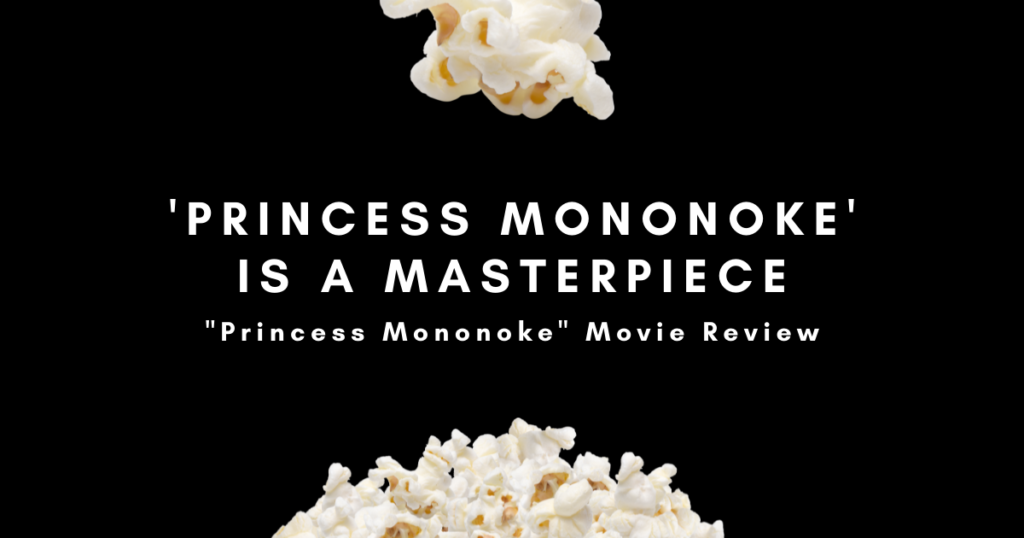
Story and image by Javier Dosamantes
"Princess Mononoke"
Directed by: Hayao Miyazaki
Rating: PG-13
Run time: 2 hours, 13 minutes
Stream on HBO Max with subscription or rent on Amazon Prime for $11.99
Hayao Miyazaki, Studio Ghibli’s co-founder, has garnered a devoted following worldwide and is widely acclaimed across the anime and cinematic worlds.
I, however, was not part of the Academy Award – winning filmmaker’s loyal fan base. Until now.
Not because I didn’t like his work. I just hadn’t seen any of it.
I know, I know, it seems like I’m the only film geek who doesn’t revere Miyazaki’s work. That all changed when I went to a screening of “Princess Mononoke” as part of The Loft Cinema’s “Cult Classics” series.
“Princess Mononoke” — written and directed by Miyazaki — is considered by many to be his best achievement out of an iconic list of contributions to manga, screenwriting, animation and film.
This animated or anime film is too layered to be categorized just under one or two genres. It combines elements of action, philosophy, historical fiction, drama, war and fantasy.
Miyazaki masterfully displayed his storytelling superpowers in this movie. He incorporated themes like the peril of humans exploiting natural resources and corporate greed without being preachy.
And underneath the obvious industry versus nature trope that the film has been known for since it came out in 1997, is the film’s essence about destiny and Shinto.
Ashitaka, the film’s protagonist, is a small village’s prince cursed by a demon boar-god in an exhilarating and impeccably animated opening scene.
After killing the demon with two arrows to each of the eyes, Ashitaka is summoned by his village’s elders. And upon the village’s wise woman’s advice, he must travel to the West, from where the demon traveled. In doing so, the elder said he would “face his destiny” and possibly find a way to lift the curse.
Destiny is a predetermined path that can be changed by the decisions we make. And the young prince remains fearless confronting danger or demons because when faced with decisions throughout his journey, Ashitaka states he seeks to see “with eyes unclouded by hate.”
With unclouded eyes and the belief in the purity of all beings, Ashitaka strengthens his connection with nature, the supernatural, and humans — shaping his destiny according to a specific moral code.
A moral code that serves as the vehicle Miyazaki uses to highlight and explore the philosophy of Shinto.
Shinto was Japan’s most practiced religious philosophy before Buddhism and Christianity became prevalent. Its principles center around the importance of the connection between humans and nature, what’s pure or impure; and worshiping the Kami — the deities overseeing the natural and supernatural.
San, or otherwise known as Princess Mononoke, juxtaposes perfectly with the character of Ashitaka.
She is a young girl raised by the wolf Kami Moro and has a deep connection with nature and the Kami, but rejects her humanity. And every decision she makes is made with eyes clouded by hate, believing in the impurity of a human race that abandoned her.
Princess Mononoke’s alliance with nature and the Kami puts her at odds with Lady Eboshi — Irontown’s ruler who’s hell-bent on industrial and technological progress.
Lady Eboshi is arguably the most nuanced character in “Princess Mononoke.” She is the antagonist of the story, but she is not a villain.
Her decisions are motivated by the desire to make her town the most powerful in Japan at all costs, even if it means exploiting the forests around it.
Irontown became a haven for outcasted lepers and sex slaves that Lady Eboshi rescued and empowered. At the same time, she became the symbol for corporate greed.
The ravaging of forests for natural resources is a price she is willing to pay to improve her people’s socioeconomic condition. Accepting a bounty to kill a powerful Kami is a line she is willing to cross to protect her town.
And this is the impasse where Ashitaka, San, the Kami and Lady Eboshi need to find a connection — or cross it with eyes clouded by hate — and face their destiny.
“Princess Mononoke” is a masterpiece. Miyazaki brought its world and characters to life with jaw-dropping animation and weaved its complexities and layers perfectly with superb writing and directing.
This classic truly stands the test of time and is worth renting. It’s becoming more relevant each passing year as humans keep shaping their destiny with more ferocity since the film first came out in 1997.
